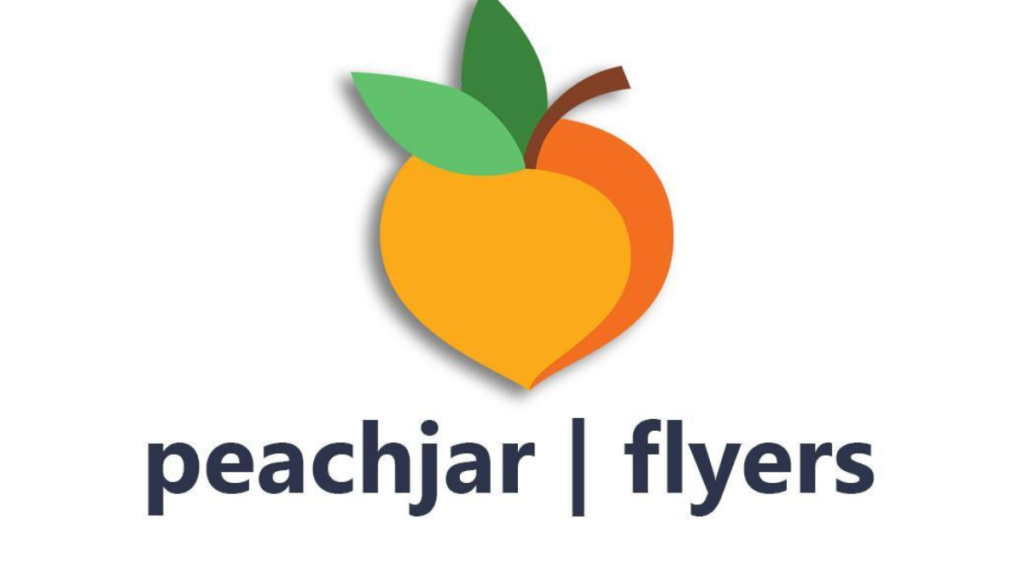Let’s face it, folks, peachjars leaks have been making waves online lately, and if you’re here, you’re probably curious about what’s really going on. In today’s digital age, data breaches and leaks are becoming more common than we’d like to admit. But what makes peachjars leaks stand out? Well, buckle up, because we’re diving deep into the details, from the background to the implications, and everything in between. Whether you’re a tech enthusiast or just someone who wants to stay informed, this article’s got you covered.
Now, before we get into the nitty-gritty, let’s talk about why this matters. Peachjars isn’t just some random website—it’s a platform that deals with sensitive information. When leaks happen, it’s not just about losing data; it’s about trust, privacy, and security. In a world where personal information is like gold, understanding these breaches is crucial for protecting yourself and your digital footprint.
So, why should you care? Because knowledge is power, my friend. Understanding peachjars leaks can help you take preventive measures to safeguard your own data. Plus, staying informed is always a good move. So, grab a coffee, sit back, and let’s break it down together. No fluff, just the raw truth.
Read also:Lyracr0w0 Onlyfans Leaks The Untold Story Behind The Viral Sensation
What Exactly Are Peachjars Leaks?
Alright, let’s start with the basics. Peachjars leaks refer to the unauthorized release of data or information from the peachjars platform. But what does that mean in simpler terms? Imagine someone breaking into a secure vault and spilling all its contents online. That’s essentially what happens during a data breach like this one.
Here’s the kicker: peachjars is a platform that handles a lot of sensitive data. Whether it’s personal information, financial records, or even internal communications, the stakes are high. When a leak occurs, it can lead to serious consequences for both users and the organization itself.
Now, let’s break it down further. Some key points to keep in mind:
- Peachjars leaks involve sensitive data.
- The impact can range from minor inconveniences to major security threats.
- Understanding the root cause is essential for prevention.
Why Do Peachjars Leaks Happen?
Let’s talk about the elephant in the room—why do these leaks happen in the first place? There are several reasons, and it’s not always as straightforward as you might think. For starters, cybersecurity threats are evolving faster than ever. Hackers are getting smarter, and even the most secure systems can have vulnerabilities.
One common cause is human error. Yep, you heard that right. Sometimes, it’s not about advanced hacking techniques but rather simple mistakes made by employees or users. Think about it—how many times have you clicked on a suspicious link or used a weak password? These small actions can have big consequences.
Another factor is outdated software. If a platform isn’t regularly updated, it becomes an easy target for attackers. Peachjars, like any other tech company, has to stay on top of its game to protect its users’ data.
Read also:Patreon Leaks The Untold Story Behind The Curtain
Common Causes of Data Breaches
Here’s a quick rundown of the most common causes:
- Phishing attacks
- Malware infections
- Insider threats
- Weak security protocols
These factors combined make peachjars leaks a real possibility, even with the best intentions and precautions in place.
Impact of Peachjars Leaks on Users
Now, let’s talk about the impact. When peachjars leaks happen, it’s not just the platform that suffers—the users are the ones who bear the brunt of it. Imagine waking up one day to find out that your personal information is floating around the internet. Not exactly a pleasant thought, right?
The consequences can vary depending on the type of data involved. If it’s financial information, you could be at risk of identity theft or fraud. If it’s personal data, your privacy could be compromised. And if it’s internal communications, the implications could be even more severe.
But here’s the thing: the impact isn’t just limited to the present. Once your data is out there, it can be used for malicious purposes for years to come. That’s why taking preventive measures is so important.
How to Protect Yourself from Data Breaches
So, what can you do to protect yourself? Here are a few tips:
- Use strong, unique passwords for all your accounts.
- Enable two-factor authentication whenever possible.
- Be cautious of phishing attempts and suspicious links.
- Regularly monitor your accounts for any unusual activity.
These steps might seem simple, but they can make a huge difference in keeping your data safe.
The Role of Cybersecurity in Preventing Peachjars Leaks
Cybersecurity plays a critical role in preventing peachjars leaks. Think of it like a fortress surrounding your data. The stronger the defenses, the harder it is for attackers to break in. But building a solid cybersecurity infrastructure isn’t easy—it requires constant vigilance and updates.
One of the key components of cybersecurity is encryption. By encrypting sensitive data, even if a breach occurs, the information remains unreadable to unauthorized users. Peachjars, like any responsible platform, should prioritize encryption as part of its security measures.
Another important aspect is regular security audits. By conducting routine checks, vulnerabilities can be identified and addressed before they become major issues. It’s like giving your digital fortress a tune-up to ensure everything’s running smoothly.
Best Practices for Cybersecurity
Here are some best practices that platforms like peachjars can adopt:
- Implement end-to-end encryption for all data.
- Conduct regular security training for employees.
- Update software and systems regularly.
- Limit access to sensitive data to only those who need it.
These practices not only help prevent leaks but also build trust with users, which is essential in today’s digital landscape.
Legal Implications of Peachjars Leaks
When peachjars leaks occur, there are often legal implications to consider. Depending on the jurisdiction, companies can face hefty fines and lawsuits for failing to protect user data. In some cases, executives may even face personal liability for negligence.
One of the key regulations that applies to data breaches is the General Data Protection Regulation (GDPR) in the European Union. Under GDPR, companies are required to report breaches within 72 hours and take steps to mitigate the damage. Failure to comply can result in significant penalties.
In the United States, the situation varies by state, but there are federal laws like the Health Insurance Portability and Accountability Act (HIPAA) that apply to certain types of data. Companies handling sensitive information must adhere to these regulations to avoid legal trouble.
Key Legal Frameworks to Know
Here are some key legal frameworks to be aware of:
- GDPR
- HIPAA
- CALOPA (California Online Privacy Protection Act)
Understanding these frameworks is crucial for both companies and users to ensure compliance and protection.
Case Studies: Notable Peachjars Leaks
To give you a better understanding of the impact, let’s look at some notable peachjars leaks. These case studies highlight the real-world consequences of data breaches and the lessons that can be learned from them.
Case Study 1: In 2021, peachjars experienced a major breach that exposed the personal information of thousands of users. The breach was traced back to a phishing attack that compromised an employee’s credentials. The company quickly responded by notifying affected users and implementing additional security measures.
Case Study 2: Another breach occurred in 2022, this time due to a vulnerability in the platform’s software. The breach resulted in the exposure of financial data, leading to several instances of fraud. Peachjars took swift action by patching the vulnerability and offering credit monitoring services to affected users.
These case studies underscore the importance of preparedness and swift action in the event of a breach.
Lessons Learned from Past Breaches
Here are some key takeaways from these case studies:
- Employee training is crucial in preventing phishing attacks.
- Regular software updates are essential to address vulnerabilities.
- Swift response and transparency are key in mitigating damage.
By learning from past mistakes, companies can better protect themselves and their users in the future.
Future Trends in Data Security
As technology continues to evolve, so do the trends in data security. One of the biggest trends we’re seeing is the rise of artificial intelligence in cybersecurity. AI can analyze vast amounts of data to detect potential threats before they become breaches.
Another trend is the increasing use of blockchain technology for data protection. By decentralizing data storage, blockchain makes it harder for attackers to compromise entire systems. Peachjars and other platforms may consider adopting these technologies to enhance their security measures.
Finally, there’s a growing emphasis on user education. Companies are realizing that empowering users with knowledge is just as important as implementing technical safeguards. By educating users about best practices, platforms can reduce the risk of breaches caused by human error.
Innovative Technologies to Watch
Here are some innovative technologies to keep an eye on:
- AI-driven threat detection
- Blockchain-based data storage
- Quantum encryption
These technologies have the potential to revolutionize data security in the years to come.
Conclusion: Stay Informed, Stay Safe
And there you have it, folks—a deep dive into peachjars leaks and everything you need to know. From understanding the causes and impacts to learning about prevention and future trends, we’ve covered it all. Remember, staying informed is the first step in protecting yourself and your data.
So, what’s next? Take action! Strengthen your passwords, enable two-factor authentication, and stay vigilant against phishing attempts. And if you’re a business owner or tech professional, prioritize cybersecurity and stay up-to-date with the latest trends and regulations.
Before you go, don’t forget to share this article with your friends and family. Knowledge is power, and the more people who are informed, the safer we all are. And hey, if you’ve got any questions or thoughts, drop a comment below—I’d love to hear from you!
Table of Contents


